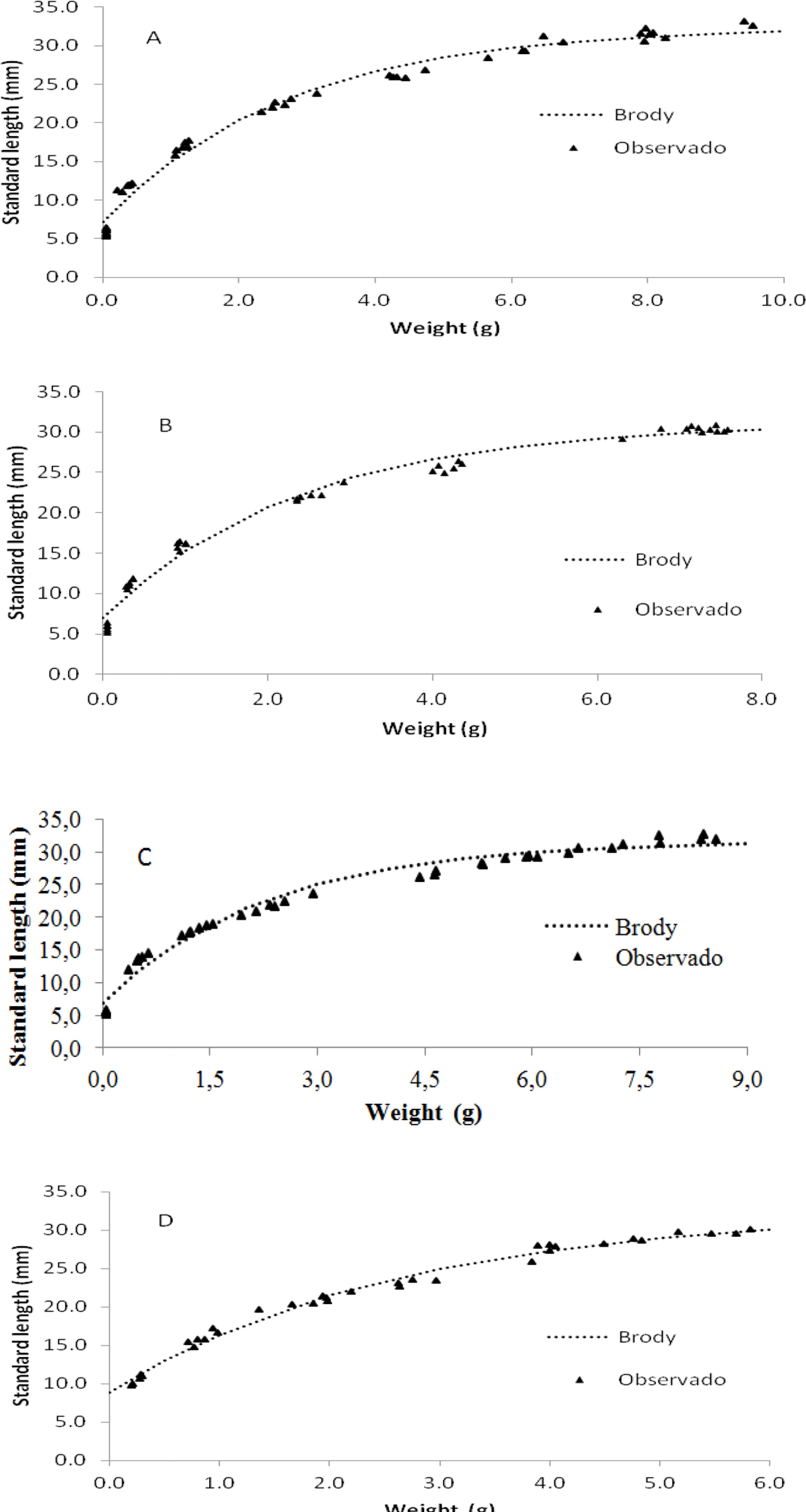SUMMARY
Biometric relationships are important to illustrate the growth of animals. When adjusted using nonlinear models, these relationships can provide important information that contributes to the improvement of breeding techniques. In this study, morphometric data as a function of weight obtained in four experiments involving bullfrog tadpoles were adjusted using Gompertz, Logistic, Von Bertalanffy and Brody nonlinear models and the best-fit model was determined. After fitting the parameters to the different models in each experiment, the models were compared based on confidence intervals (α = 0.05). The following criteria were used for selection of the best model: biological interpretation, residual mean square, coefficient of determination, graphic analysis, and number of iterations. Standard and total length data as a function of tadpole weight converged in the four models. The Logistic and Gompertz models had no biological interpretation for some datasets. The Brody model provided the lowest residual mean square and number of iterations for the variables studied in all experiments. The Brody relative growth rate (K) was lower for total length when compared to standard length, indicating a greater initial growth in standard length. The Brody model was the best to describe the growth in standard and total length of bullfrog tadpoles as a function of weight.
biometric relationship; frog farming; growth; length


